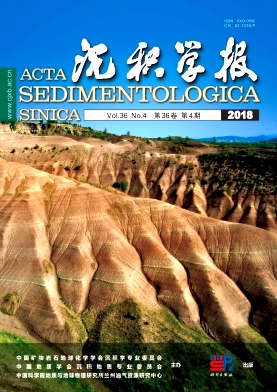A Research on Relative Lacustrine Level Changes of the Lower Triassic Baikouquan Formation in Mahu Sag of Junggar Basin
doi: 10.14027/j.issn.1000-0550.2018.057
- Received Date: 2017-06-23
- Rev Recd Date: 2017-09-11
- Publish Date: 2018-08-10
-
Key words:
- relative lacustrine level changes /
- high-resolution sequence stratigraphy /
- logging wavelet transform /
- Fisher plots /
- Baikouquan Formation /
- Junggar Basin
Abstract: The Triassic Baikouquan Formation in Junggar Basin has not been clear about the characteristics of relative lake level changes, which restricts the analysis of their distribution and evolution of the sediments. This formation can be divided into one long-term sequence cycle, four mid-sequence cycles, 16 short-term sequence cycles, 126 super short-term sequence cycles on the high-resolution sequence stratigraphic division method combined with traditional qualitative analysis and quantitative logging wavelet transform analysis,under the guidance of high-resolution sequence stratigraphy theory, comprehensive drilling, logging and other information. The 126 super short-term sequence cycles were Fisher plots. Analysis of the Fisher plots shows the characteristics of relative lacustrine level changes. The Baikouquan Formation relative lacustrine level change is a continuous lacustrine transgression process.T1b1, T1b2 and T1b3, respectively, corresponds to a large-scale lacustrine transgression process, and each the large lacustrine transgression process contains several times of the lake level rise and fall cycle, and at T1b3 lake level reached the largest area. Compared with previous results and drilling geological information, we find that the lake curve has high reliability.
| Citation: | ZHANG Tan, ZHANG ChangMin, QU JianHua, ZHU Rui, YUAN Rui, PAN Jin, TAO JinYu. A Research on Relative Lacustrine Level Changes of the Lower Triassic Baikouquan Formation in Mahu Sag of Junggar Basin[J]. Acta Sedimentologica Sinica, 2018, 36(4): 684-694. doi: 10.14027/j.issn.1000-0550.2018.057 |






 DownLoad:
DownLoad: